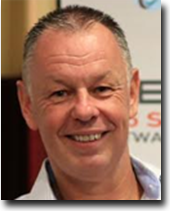How to get the most out of Test Management
Abstract
 The ISTQB Advanced Test Management training teaches you some of the disciplines needed to be a Test Manager, but it does not teach you about the soft skills, how best to use your estimates and the practical application of Risk Based testing to help you deliver better quality. Nor does it teach you what key progress indicators (KPI’s) that will help you, as a test manager, have a better view of progress.
The ISTQB Advanced Test Management training teaches you some of the disciplines needed to be a Test Manager, but it does not teach you about the soft skills, how best to use your estimates and the practical application of Risk Based testing to help you deliver better quality. Nor does it teach you what key progress indicators (KPI’s) that will help you, as a test manager, have a better view of progress.
This tutorial takes the attendee on a journey to show what the essential components of test management are.
You will learn how you negotiate, how you motivate and how to influence your team to deliver the best.
Using risk to decide on the approach to testing is a key activity for a Test Manager this tutorial will show how, due to differing risks, no two projects are the same, how to recognize risk and how to decide on which test approach best suits the quality requirements of your business.
The tutorial is a mixture of lecture and practical exercise.
Language
The tutorial is in English.
Suggested attendees
- Aspiring Test Managers
- New Test Managers
- Those requiring an overview of test management
- Existing Test Managers looking to refresh their skills
Duration
Full day
Outline
- What is a Test Manager?
- Defining the role
- Managing people
- Using the PTMM (People Test Maturity Model)
- Using Belbin
- Motivation, Delegation and Negotiation
- Test Estimating
- Estimating
- Approaches to Testing
- Analytical
- Model Based
- Methodical
- Standards Compliant
- Dynamic and heuristic
- Process Complaint
- Consultative
- Regression averse
- Test approach based upon Risk
- What is risk
- Product risks
- Risk and test planning
- Mitigating Product risks
- Information provision
- Choose your KPI’s carefully
Geoff Thompson's Biography






 Testers use requirements (user stories) as the basis of test cases, review them for testability, and often participate in requirement reviews. All of this is even more true in Agile environment, where most testers contribute to the development of user stories and acceptance criteria.
Testers use requirements (user stories) as the basis of test cases, review them for testability, and often participate in requirement reviews. All of this is even more true in Agile environment, where most testers contribute to the development of user stories and acceptance criteria. As you embark on implementing automation as part of your testing process you want to avoid other’s missteps and follow best-practices. The Framework concept has come up several times and you wonder what it means, what it does, and if you need one. Andrew Pollner has been developing automated testing frameworks for over 23 years and has seen the evolution in what a framework represents for automated testing. In this tutorial you will learn about the history of automated testing tools and how Frameworks grew around them. The concepts are similar regardless of which automation tool you use. The tutorial will answer many of your questions: Why build a Framework? What benefit does a Framework provide? How does one maintain a Framework? What does it cost to build a Framework? What ROI can I get from using Framework? We will explore different approaches to Framework development, things to watch out for, and ensuring that the approach you take will provide years of productivity. You'll leave with a much better understanding of automated Frameworks and hopefully the confidence to build your own.
As you embark on implementing automation as part of your testing process you want to avoid other’s missteps and follow best-practices. The Framework concept has come up several times and you wonder what it means, what it does, and if you need one. Andrew Pollner has been developing automated testing frameworks for over 23 years and has seen the evolution in what a framework represents for automated testing. In this tutorial you will learn about the history of automated testing tools and how Frameworks grew around them. The concepts are similar regardless of which automation tool you use. The tutorial will answer many of your questions: Why build a Framework? What benefit does a Framework provide? How does one maintain a Framework? What does it cost to build a Framework? What ROI can I get from using Framework? We will explore different approaches to Framework development, things to watch out for, and ensuring that the approach you take will provide years of productivity. You'll leave with a much better understanding of automated Frameworks and hopefully the confidence to build your own. A distanza di quindici anni dalla pubblicazione del Manifesto Agile, Scrum è utilizzato, spesso in abbinamento ad altri modelli, in almeno il 70% delle organizzazioni che dichiarano di applicare metodologie Agile nel mondo. I ruoli chiave del Product Owner e dello Scrum Master sono quindi entrati nella terminologia comune, eppure sono ancora moltissime le situazioni in cui questi ruoli sono applicati in modo improprio, confuso e, in un numero di realtà sorprendentemente alte, sono addirittura assenti.
A distanza di quindici anni dalla pubblicazione del Manifesto Agile, Scrum è utilizzato, spesso in abbinamento ad altri modelli, in almeno il 70% delle organizzazioni che dichiarano di applicare metodologie Agile nel mondo. I ruoli chiave del Product Owner e dello Scrum Master sono quindi entrati nella terminologia comune, eppure sono ancora moltissime le situazioni in cui questi ruoli sono applicati in modo improprio, confuso e, in un numero di realtà sorprendentemente alte, sono addirittura assenti.